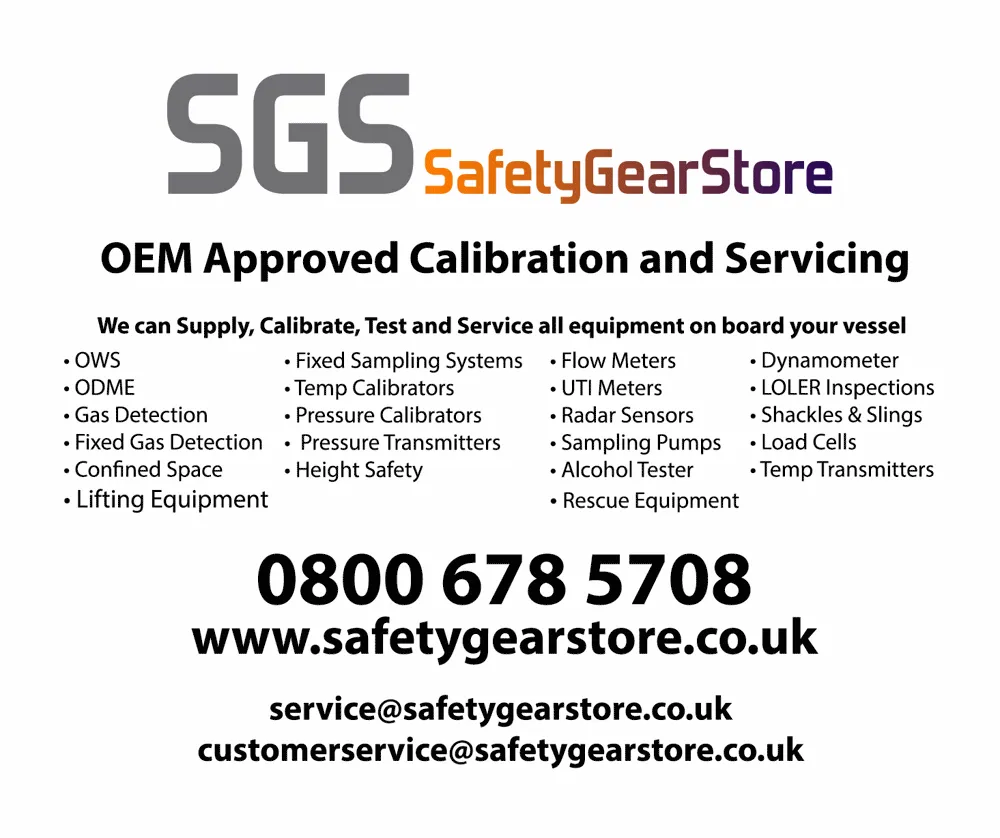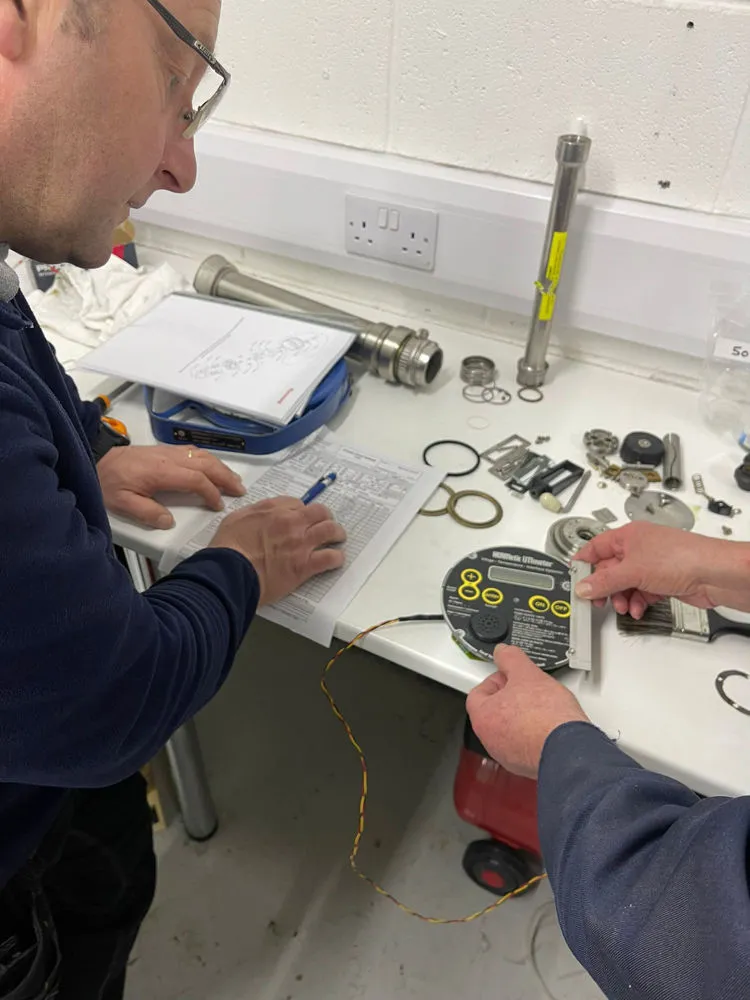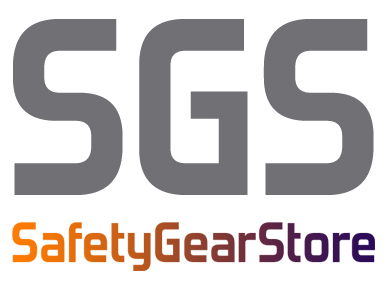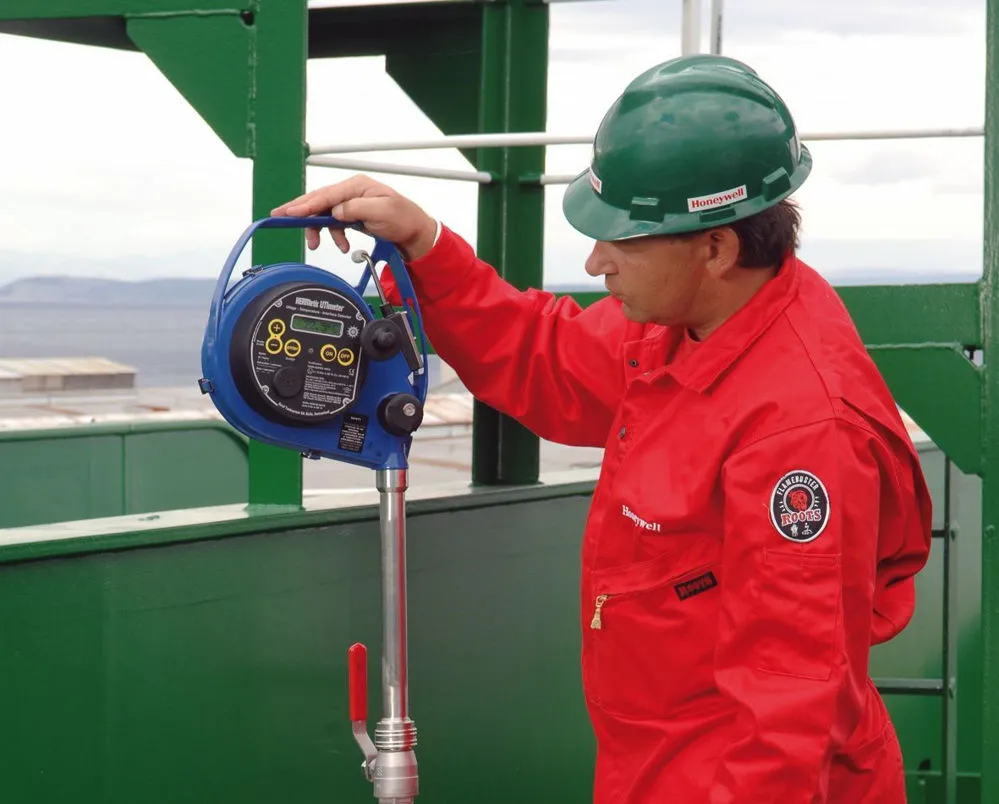Don't have an account?
- 0
- Shopping cart 0
Call Free for Sales & Technical Support
0800 678 5708

Safety Gear Store is the only UK and Ireland OEM Honeywell Marine service centre, with only 18 other OEM centres worldwide we form part of a select few of the world's leading suppliers of portable level gauging and sampling equipment for marine applications.
As the only authorised repair workshop we are trained to maintain and repair Honeywell Marine equipment such as UTI and HERMetic products. From our dedicated service centre we conduct all our work in compliance with international regulations issued by international classification bodies using specialist Honeywell equipment, which is specifically only available to Safety Gear Store and the other 18 service centres.
Other authourised service centres use this link below:-
https://process.honeywell.com/us/en/initiative/honeywell-authorized-parts-service
Our main product lines are: • HERMetic portable level gauging equipment, an important tool for inventory control, cargo inspection during custody transfer and verification or calibration of automatic gauging systems. • HERMetic portable sampling equipment, an important tool designed to sample liquids from tanks under closed or restricted conditions. Measurement accuracy is essential for the sale, purchase and handling of petroleum products. It reduces the likelihood of disputes between buyer and seller and facilitates control of losses. Accurate measurement demands the use of standard equipment and procedures. Although automatic level gauging systems are in widespread use in the petroleum industry for the measurement of petroleum liquids in storage tanks, manual tank gauging is still widely applied as the normal technique for level measurement in non-pressurised and vapour tight tanks. It is highly accurate provided the correct procedures are carefully observed. Manual tank gauging is the method that shall be applied for the calibration (setting) and periodic verification of automatic level gauging (ALG) systems. It is also normally selected as the reference method for the measurement of the level of liquid in a tank, should a dispute arise between the parties in a commercial transaction. |  |
|
Portable electronic gauging devices are multi-functional in that they may measure other functions such as the level of any oil/water interface, temperature, in addition to measuring ullage. Portable electronic gauging devices are available for either open, restricted, or closed gauging applications. Closed and restricted gauging operations will generally require the portable electronic gauging device to be used in conjunction with a compatible vapour lock valve. Alternatively, a suitable adapter will be required when it is necessary to use a PEGD (that is designed to be used with one particular type of valve fitting) with a different vapour lock valve fitting. Representative measurements of the temperature of the tank contents are also required to convert the observed volume to a standard volume measurement. When the tank contains free water in addition to the petroleum liquid, it will generally be necessary to measure the level of the oil/water interface. If the oil also contains suspended water and/or sediment, representative samples and analysis will normally be required to enable the calculation of the net standard volume of the oil. |
OPEN, CLOSED AND RESTRICTED GAUGING
Safety and environmental regulations may restrict tank gauging operations which can result in the release of hydrocarbons or other volatile organic compounds (VOCs) into the atmosphere. In these circumstances, it will not normally be feasible to use traditional open gauging procedures via an open gauge hatch or gauging access point.
When the tank ullage space is pressurised, and/or the tank forms part of a vapour balancing/ recovery system, it will normally be necessary to use closed or restricted gauging procedures to avoid de-pressurising the tank and minimise the consequent loss of VOCs. If the vapour from the tank contents is hazardous, it will also normally be necessary to use closed or restricted gauging procedures to minimise the risk of environmental impact.
Closed gauging is the process of taking measurements within a tank using closed gauging devices under closed system conditions. A closed system exists when the operations do not permit the direct exposure and/or release of any tank contents to atmosphere. Manual closed gauging measurements are therefore normally made via a vapour lock valve, using a closed measurement device that provides a gas-tight seal when in use. Restricted gauging is the process of taking measurements within a tank using a restricted gauging device that is operated via a vapour lock valve. Restricted equipment is designed to substantially reduce or minimise the vapour losses that would occur during open gauging, but may still allow some small quantity of vapour to escape because the equipment is not completely gas tight.
IMO REQUIREMENTS
Annex I of MARPOL 73/78 Chapter II, Reg. 15(3)(b) The International Convention for the Prevention of Pollution from Ships, 1973 specifies that oil tankers shall be provided with effective oil/water interface detectors approved by the Administration for a rapid and accurate determination of the oil/ water interface in slop tanks and shall be available for use in other tanks where the separation of oil and water is affected and from which it is intended to discharge effluent direct to the sea.
Contact SGS to discuss your Honeywell Marine requirements on 0800 678 5708 or email us at Sales@safetygearstore.co.uk
Worldwide Shipping
Place a purchase order, call or email to get an international shipping quote
Secure Online Purchasing
SECURED BY SECTIGO (We do not accept AMEX)
Technical Support
Call or email to speak to a member of the technical team





